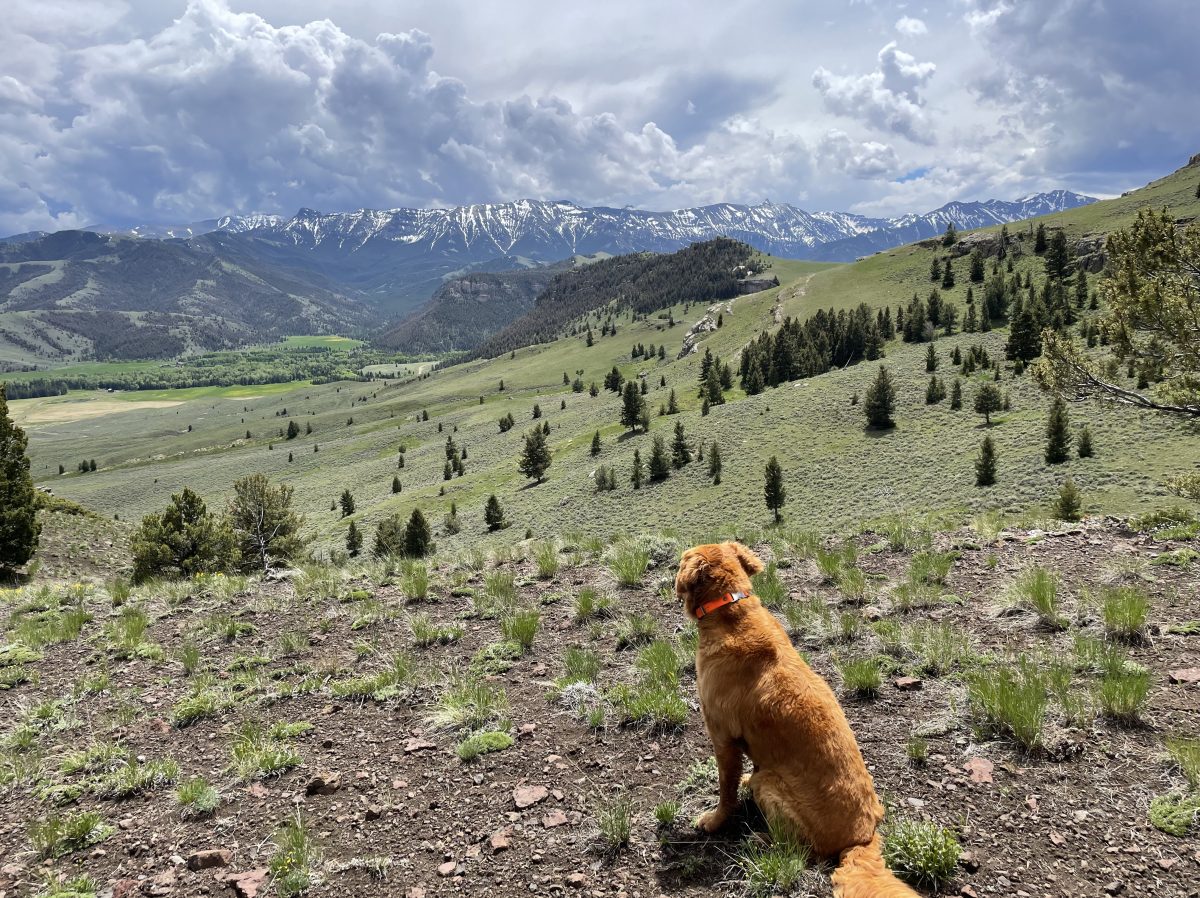The Clark’s Nutcrackers are starting to hang around, making a ruckus with their characteristic nasal loud call. They’re waiting for the Limber Pine cones to ripen. The cones are still green; maybe a few more weeks. But they’re anxious to begin their ancient fall ritual of collecting and storing seeds–tens of thousands each year–and incredibly they remember these locations. The seeds that aren’t retrieved might just grow into young pines.
A Forest Service botanist gave me two hints when planting Limber Pine seedlings:
1. Put two or three seedlings in one hole to imitate how a Nutcracker might have stored those seeds and
2. Collect some soil from around a mature Limber Pine and place it in the planting hole. That soil has the correct mycorrhiza (fungi) that is symbiotic with the pines.
I’ve been inspecting the cone production this year and although it seemed better than last year’s very low production, it appears not to be a boon year. Many trees have no cones. Others just a few. I’d judge that around my home the production is going to be medium-low.
I was curious what the Whitebark production is this year. Sometimes the Limber mirrors the Whitebark, other times it’s a good substitute. In a hike up Windy Mountain yesterday, our last remaining live stands of Whitebark are up there. There are lots of dead trees and a few young trees, but there are still some standing mature live trees.
Whitebarks and Limber Pines cone at the top growth only. Trees that are in the open will produce more cones. Windy mountain has a fairly tight forest with upright trees. Looking at the potential 2014 cone production, I estimated about the same amount as my Limbers. That got me wondering what the official report for 2014 of the Interagency Grizzly Bear Study Team is from the transects they use.
The IGBST is reporting a medium high cone production for 2014. They define a ‘good’ production of average of 20 cones per tree, vs. 5 cones per tree last year. But here is the catch. Total mortality on their transects (read ‘dead trees’ from beetles specifically) since 2002 is 75%. So there are 3/4 less trees from which to obtain food, even if there is good production on those remaining trees.

The IGBST did the Whitebark Pine study required by a judge before delisting. They concluded that the bears will find other foods in the ecosystem and so can be delisted. The states are pushing for that delisting status in order to begin a hunt, for which they can charge high dollars for a grizzly bear tag.
Recently I was at a landowners’ meeting where a county commissioner gave a short talk. He mentioned he was on the grizzly bear committee, representing Park County. This man is no scientist. He is a politician first and foremost; and he said to this group of landowners that the study ‘proved’ the bear is doing fine without Whitebark pine nuts. Don’t believe it. He was simply chanting the line that politicians and state managers have been saying for years in order to delist.
I firmly disagree with delisting the Grizzly. The bear has been dependent on these nuts for making ‘brown fat’ for hibernation. Without this nut you can be sure to see the Greater Yellowstone Grizzly wandering into the bottomlands where more people live, eating foods like Russian Olive nuts that grow in the drainages, or even livestock.
There are several reasons why I am NOT for delisting the Grizzly:
1. Grizzly bears are highly intelligent animals, at least as smart as the Great Apes, which puts them on par with humans.
2. Bears primary food sources–pine nuts and cutthroat trout–are compromised
3. Climate Change is a big unknown for food for these large carnivores. Moths that the bears rely on are also a fragile food given pesticides loads in the prairie states.
and one of the most important reasons:
4. Bears confined to the GYE do not, at this point, have adequate corridors for genetic diversity and may over time die out. The IGBST delisting plan calls for flying in bears to the ecosystem if and when genetic diversity is compromised. I’ll say that again “FLYING IN BEARS”!
To compensate for reduced primary foods, as well as provide a buffer for climate change and provide genetic diversity, bears need to be able to move in and out of the GYE. Yellowstone to Yukon (Y2Y) targets this need. Presently there are large bear unoccupied areas of this natural corridor; swaths of public and private lands that were formerly bear territory (Central Idaho Complex is an unoccupied example).
It took over 30 years to bring the GYE grizzly numbers up to about 650 bears, from less than 200. If delisting, and hunting, returns, it won’t be long before those numbers begin to decline again.
Grizzly bears are not just critical to the ecosystem. They provide something critical to man–the power of the Present moment. There is nothing more wonderful than that ‘alive’ feeling of walking through woods where grizzly bears at present. The grizzly bears gift to man is the Power of the Present. Let us honor that.


Nice article, you had very valid reasons why the grizzly bear should not be delisted, and I agree with you completely. The pine nuts are such an important food source, and anyone who states that there is proof that bears don’t really need them, are folks who are more interested in their own desires than what is good for the bears or the ecosystem that they live in. Too many politicians and want to be politicians don’t rely on science for their stands, rather they spot garbage that they think their constituents want to hear and believe in.
LikeLike